The splendor and twilight of the American barn
Marvels of craftsmanship and beauty, the iconic buildings of ‘Gone with the Wind’ and ‘The Grapes of Wrath’ are in danger of disappearing
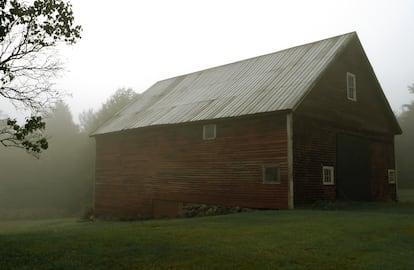
The technological revolution and large-scale commercial development sweeping through rural America are threatening countless barns, those idyllic symbols of the country’s agrarian landscape. Each barn, unique in its own way, holds an extraordinary heritage that encapsulates the richness of a fading era, stretching from the Great Lakes across the sprawling Midwestern plains.
During the Great Depression in the United States, barns left a lasting impression on the literary world. From John Steinbeck’s The Grapes of Wrath to Harper Lee’s Pulitzer Prize-winning To Kill a Mockingbird, these masterful structures captured the essence of that era. William Faulkner’s melodramatic Barn Burning tale of the South brought barns to life on the big screen in Lee Chang-dong’s film adaptation of Haruki Murakami’s short story of the same name (winner of the 2023 Princess of Asturias Award for Literature).
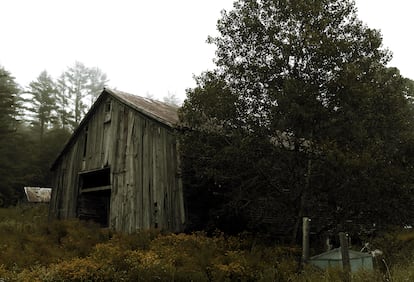
“All these great barns out here in the outskirts, black creosote boards knee-deep in the bluegrass. They look so beautifully abandoned, even in use,” wrote American poet Ada Limón in What It Looks Like To Us and the Words We Use. The symbol of the barn evokes a profound connection with nature — capturing the essence of slow progress, human endeavor and the enduring bond between generations. It takes us back to a time before cookie-cutter buildings, plastic and plywood. When barns stood proudly near bustling cities and towns, storing bountiful harvests of grain, milk and crops.
According to Thomas D. Visser, a professor of historic preservation at the University of Vermont, barns can be found in almost all rural areas of the United States. They vary in style and size based on different farming practices. The most common types include grain and dairy barns, as well as stables for animals, sheds for farm tools, and crop storage barns. “These designs aren’t really economically practical nowadays,” he said. “That’s why they’ve been abandoned, and people are trying to find new ways to use them.”
The decline of barns accelerated after World War II with improved highway access, replacing family farms with suburbs. Local dairy farms were supplanted by larger operations that relied on refrigerated trucks for long-distance transportation. As time passed, the nostalgic remnants of barns, once the cherished backdrops for countless childhood memories, quietly faded away. The few that remain stand as poignant reminders of a bygone era, invoking the vibrant past of rural communities.
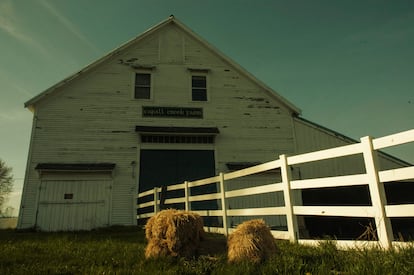
In addition to their practical function, barns often exude an intimate and secluded ambiance. In Mary Shelley’s Frankenstein, she ingeniously used a barn as a sanctuary for the inhuman creature, symbolizing its dual nature. The first science fiction masterpiece, Frankenstein elevated the barn to a thought-provoking laboratory, where the creature keenly observes the complexities of human nature. Beyond mere gothic horror, this story imbues the barn with profound psychosocial significance.
Old world replicas
Granaries are among the oldest structures created by humans, like the Hispano-Roman grania and horrea. In English, the word barn shares a root with barley. Initially, a barley or barn house served as the storage place for drying grain. The oldest standing barns are found in the English town of Cressing Temple and date back to 1270. Constructed by the Knights Templar, each barn was made from nearly 500 oak trees, a legacy that made its way to America five centuries later.
When European settlers arrived in what is now New England, they started farming the land and building barns similar to the ones they knew from the Old World. These barns were versatile structures with different shapes and intricate roofs. The broad sides provided protection from snow and wind, while the interior temperature, humidity, cattle and hay the lives of many American families for nearly 300 years.
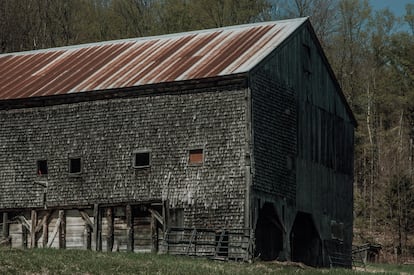
There are many movies featuring barns in prominent roles. In Witness (1985), the barn symbolizes the clash between the Amish way of life and the modern world’s criminal violence. In a memorable scene, the whole Amish community comes together to raise a barn in one day. Those who grew up in the 1970s will certainly remember Little House on the Prairie, a heartwarming TV series that whimsically captured the rural lifestyle of the Ingalls family in their rustic cabin and barn in the middle of nowhere.
Visser, the author of the award-winning Field Guide to New England Barns and Farm Buildings, says English barns were common during the 17th and 18th centuries. The one-story barn has three bays — one for livestock, a central threshing floor, and a space for storing hay, straw or sheaves. The third bay was sometimes used as a granary. Some of these precious gems are still standing and present an agricultural heritage that should be preserved.
Until the mid-19th century, barn builders served as designers, architects and carpenters. They could remarkably assess the weight of snow on roofs without using sophisticated engineering calculations. Transforming logs into posts and beams using axes, and assembling them by hand with no hardware or hinges, was a slow and laborious task. After the Civil War (1861-1865), the Industrial Revolution ushered in a new era of prosperity that had both positive and negative impacts on barn construction.
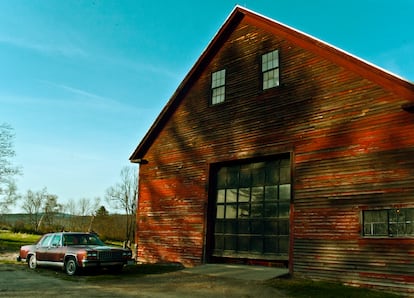
During the Civil War, the loss of so many young people forced farms to adapt by adding cattle raising, new crops and dairy to the traditional grain production. This established a self-sustaining ecosystem, requiring only a few essentials like salt, sugar, tea and coffee to be sourced externally. At the same time, trains and mechanization brought about the emergence of light, easily assembled structures. These two types of barns coexisted until the end of World War II, when factories took over production and the old barns were gradually abandoned.
“After that,” said Visser, “farmers started keeping hundreds of dairy cows in sheds and feeding them straw stored in bunker silos.” The changes also impacted poultry and pig farming. This shift to a manufacturing-based economy led to migration from rural to urban areas and a smaller number of large farms run by prosperous owners.
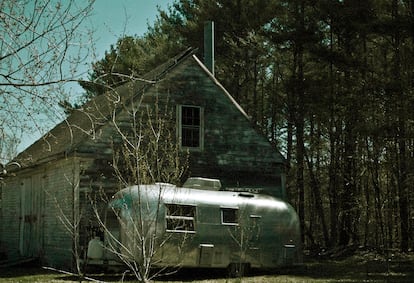
Splendor in the grass
Throughout history, the evolution of barns and farms has been closely connected to rural developments and the winds of war. Margaret Mitchell’s Gone with the Wind skillfully depicts the decline of the enormous Southern plantations, where barns and stables were an important part of slave life. Between the Civil War and World War II, barns reached their peak in splendor and acquired distinctive features. They ballooned in size, giving rise to what were often called “country cathedrals.” These expansive structures served as vital storage spaces for rural economies, with an upper level for storing straw and crops, and a lower level for composting manure.
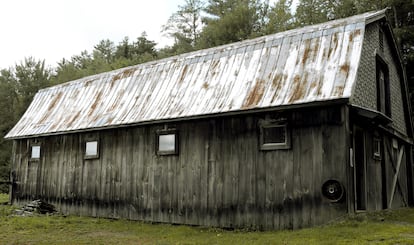
Vents and domes were added to barns to reduce the risk of devastating fires and prevent the airborne spread of contaminants that caused tuberculosis. The introduction of electricity, machinery and cement floors brought about improvements in farm hygiene and productivity. However, these innovations ultimately contributed to reduced agricultural functionality.
Even though New England isn’t known for grain cultivation, the region’s barns have played a significant role in preserving its history. Connecticut had a thriving tobacco industry, while Vermont was known for dairy farms, and Maine for lumber. Each area designed barns to suit local conditions and geography. Over time, barns were built on sloping land for increased efficiency, no longer connected to houses.
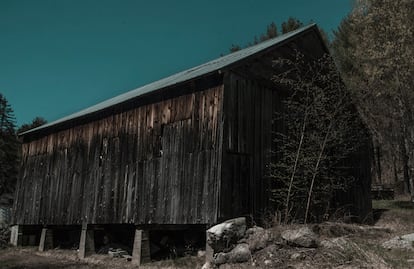
In Maine, the largest state in New England, the old barns exude a certain captivating charm and timeless aura. According to Don Perkins, author of The Barns of Maine: Our History, Our Stories, the state’s geographic isolation and extensive forest coverage have helped preserve the old barns. There are two contrasting worlds here: the affluent coastline one adorned with beautiful bays, lighthouses, charming white houses and delectable lobster restaurants. On the other hand, inland Maine consists of sparsely populated forests and scattered communities crisscrossed by rivers. This is where the venerable old men, as the barns are affectionately called, stand stoically amid mountains and sawmills, unperturbed by the hustle and bustle of modern life.
Forgotten and neglected
Remnants of a bygone era, the American barns have been forgotten and neglected for decades. Yet they live on in our collective imagination, sturdy structures that have admirably stood the test of time with their red paint, a mix of wood-preserving iron oxide and linseed oil.
Associations like the National Barn Alliance, the Michigan Barn Preservation Network, and the Preservation Trust of Vermont actively promote the renovation and repurposing of barns. Some states even provide funding for barn conservation, and many barns have been transformed into farmers’ markets, hardware stores, workshops, or venues for gardening, antique sales and auctions. Architects and artists are increasingly acknowledging the untapped potential of these spaces as havens for retreat and inspiration.
Don Perkins says there’s a resurgence of passionate barn builders determined to revive ancient construction techniques that were once passed from generation to generation. They are sure to survive as useful horse stables, while their role in the dairy industry may fade away. Teetering between oblivion and revival, these majestic old buildings defiantly stand their ground.
Sign up for our weekly newsletter to get more English-language news coverage from EL PAÍS USA Edition
Tu suscripción se está usando en otro dispositivo
¿Quieres añadir otro usuario a tu suscripción?
Si continúas leyendo en este dispositivo, no se podrá leer en el otro.
FlechaTu suscripción se está usando en otro dispositivo y solo puedes acceder a EL PAÍS desde un dispositivo a la vez.
Si quieres compartir tu cuenta, cambia tu suscripción a la modalidad Premium, así podrás añadir otro usuario. Cada uno accederá con su propia cuenta de email, lo que os permitirá personalizar vuestra experiencia en EL PAÍS.
¿Tienes una suscripción de empresa? Accede aquí para contratar más cuentas.
En el caso de no saber quién está usando tu cuenta, te recomendamos cambiar tu contraseña aquí.
Si decides continuar compartiendo tu cuenta, este mensaje se mostrará en tu dispositivo y en el de la otra persona que está usando tu cuenta de forma indefinida, afectando a tu experiencia de lectura. Puedes consultar aquí los términos y condiciones de la suscripción digital.
More information
Archived In
Últimas noticias
Most viewed
- Reinhard Genzel, Nobel laureate in physics: ‘One-minute videos will never give you the truth’
- Oona Chaplin: ‘I told James Cameron that I was living in a treehouse and starting a permaculture project with a friend’
- Pablo Escobar’s hippos: A serious environmental problem, 40 years on
- Why we lost the habit of sleeping in two segments and how that changed our sense of time
- Chevy Chase, the beloved comedian who was a monster off camera: ‘Not everyone hated him, just the people who’ve worked with him’










































